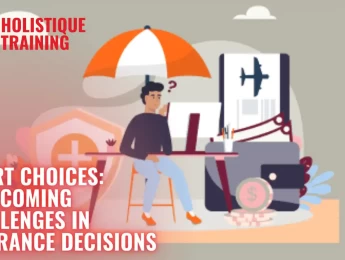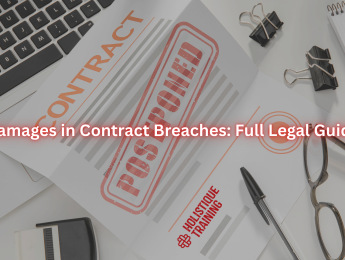- Table of Contents
- What Are the Different Types of Insurance Policies Available?
- How Do Premiums, Deductibles, and Coverage Limits Work?
- What Are the Benefits of Bundling Insurance Policies?
- How to Compare Insurance Policies Effectively?
- What Are the Common Pitfalls to Avoid in Choosing Insurance?
- What Role Does Customer Service Play in Selecting an Insurance Policy?
Introduction
Choosing the right insurance policy is a crucial decision that affects both financial security and peace of mind. With a myriad of insurance types available, understanding premiums, deductibles, and the benefits of bundling policies becomes essential. This guide aims to navigate the complexities of selecting the appropriate insurance coverage, highlighting the importance of comparing policies, avoiding common pitfalls, and recognizing the significance of customer service in the decision-making process. By equipping yourself with the right knowledge and approach, you can ensure comprehensive protection tailored to your unique needs and circumstances.
What Are the Different Types of Insurance Policies Available?
The insurance landscape offers a vast array of policies designed to protect individuals, families, and businesses against various risks and financial losses. Understanding the different types of insurance policies available is crucial in choosing the right coverage to meet specific needs and circumstances. Here's an overview of the primary categories of insurance policies available:
- Life Insurance:This type of insurance offers a financial safety net for your dependents, ensuring they receive monetary support after your passing. There are two main types: term life insurance, which offers coverage for a specified term or period, and whole life insurance, which includes an investment component and covers the insured for their entire life.
- Health Insurance:Health insurance covers medical expenses arising from illnesses, injuries, or preventive care. It can range from basic emergency coverage to comprehensive plans covering a wide array of medical services, including doctor visits, surgeries, hospital stays, and prescription medications.
- Auto Insurance: Auto insurance offers financial protection against physical damage or bodily injury resulting from vehicle accidents, as well as liabilities that could arise from such incidents. Coverage typically includes property damage, liability, and medical costs.
- Homeowners Insurance:Homeowners insurance protects against losses and damages to an individual's house and assets in the home. It also provides liability coverage against accidents that may occur within the home or on the property.
- Renters Insurance: Similar to homeowners insurance, renters insurance offers coverage for a tenant's belongings within a rented property. It also provides liability protection but does not cover the structure itself, which remains the landlord's responsibility.
- Disability Insurance:Disability insurance offers income protection to individuals who become disabled and are unable to work for a period of time. It helps cover living expenses until the individual can return to work.
- Long-term Care Insurance: This insurance covers the costs of long-term care services, either in a facility or at home, for individuals with chronic illnesses, disabilities, or other conditions requiring daily assistance over an extended period.
- Liability Insurance:This insurance safeguards you from financial claims related to injuries or property damage to others for which you might be held accountable. It handles both the legal expenses and any compensation you're required to pay.
- Travel Insurance: Travel insurance covers unforeseen travel-related expenses, including trip cancellations, medical emergencies abroad, lost luggage, and other losses incurred while traveling.
- Business Insurance:Business insurance encompasses various policies that protect businesses from losses due to events that may occur during the normal course of business. This includes property damage, legal liability, and employee-related risks.
- Umbrella Insurance:Umbrella insurance offers additional liability coverage beyond the limits of the insured's homeowners, auto, and boat insurance policies. It provides an extra layer of security to protect assets from major claims and lawsuits.
- Pet Insurance: Pet insurance helps cover the cost of veterinary care for pets, including treatments for illnesses, injuries, and preventive care.
Each type of insurance policy caters to different risks and offers varying levels of protection. Understanding these differences is key to selecting the right insurance coverage to safeguard one's health, assets, and financial well-being.
How Do Premiums, Deductibles, and Coverage Limits Work?
Understanding how premiums, deductibles, and coverage limits work is essential when choosing the right insurance policy. These elements are fundamental to the structure of an insurance contract, influencing both the cost and extent of coverage. Here's an in-depth explanation:
- Premiums:
- Definition: A premium is the amount you pay to an insurance company for your insurance coverage. This payment can be made annually, semi-annually, quarterly, or monthly, depending on the policy terms.
- Determining Factors: Premium amounts are determined by assessing the risk associated with insuring you or your property. Factors influencing premiums include the type of coverage, the amount of coverage, your personal information (age, health, driving record, etc.), and the likelihood of a claim being made.
- Importance: Premiums are the cost of obtaining insurance. Selecting a policy involves finding a balance between the premium you can afford and the level of coverage you require.
- Deductibles:
- Definition:This refers to the portion of expenses that you're responsible for paying directly before your insurance benefits begin to cover the costs. Deductibles can apply per policy, per claim, or per event, depending on the terms of your insurance policy.
- Role in Insurance: Deductibles are designed to share the risk between the insurer and the insured. Opting for a higher deductible can lower your premium costs, as you're assuming more of the financial risk.
- Choosing a Deductible: The choice of deductible amount is crucial. A higher deductible means lower premiums but more out-of-pocket expenses when you file a claim. Conversely, a lower deductible results in higher premiums but less financial strain in the event of a claim.
- Coverage Limits:
- Definition: Coverage limits are the maximum amount an insurance company will pay for a covered loss. Limits can be set per occurrence, per year, or over the life of the policy, depending on the type of insurance and the specific policy.
- Impact on Coverage: The coverage limit directly affects the protection your insurance policy provides. Choosing adequate coverage limits is vital to ensure you're sufficiently protected against potential losses.
- Balancing Coverage and Cost: While higher coverage limits offer more protection, they also come with higher premiums. It's important to assess your risk exposure and financial capacity to determine appropriate coverage limits that provide adequate protection without overextending your budget.
- Striking the Right Balance:
When selecting an insurance policy, it's crucial to understand how premiums, deductibles, and coverage limits interact and influence each other. Ideally, you'll want to strike a balance that offers adequate protection while remaining affordable. Consider your personal risk tolerance, financial situation, and the specific risks you're insuring against when making these decisions.
- For premiums, assess how much you can afford to pay regularly without straining your budget.
- For deductibles, consider how much you can realistically pay out of pocket in case of a claim.
- For coverage limits, evaluate the maximum potential loss you could face and ensure your coverage limits are sufficient to cover these costs.
By carefully considering these factors, you can choose an insurance policy that provides the right level of protection at a cost you can manage, ensuring peace of mind andfinancial security.
What Are the Benefits of Bundling Insurance Policies?
Bundling insurance policies, which involves purchasing multiple insurance products from the same provider, can offer several significant benefits. This approach is commonly seen with homeowners and auto insurance, but it can apply to various combinations of insurance policies. Here's a detailed look at the advantages of bundling:
- Cost Savings:
- Discounts: The most immediate benefit of bundling is the potential for discounts. Insurance companies often offer lower rates when you purchase more than one policy, as it’s more cost-effective for them to manage multiple policies for a single customer.
- Consolidated Billing: Bundling can also simplify billing, with some insurers offering a single, consolidated bill for multiple policies. This not only makes it easier to manage your finances but can also reduce transaction fees associated with separate payments.
- Simplified Management:
- Convenience: Managing multiple insurance policies through one provider simplifies the process, making it easier to keep track of renewal dates,payment schedules, and coverage details.
- Unified Customer Service: Having all your policies with one insurer means you have a single point of contact for all your insurance needs. This can be particularly helpful when you need to update your information, modify coverage, or if you have questions about your policies.
- Better Relationship with Insurer:
- Increased Leverage: Bundling policies can strengthen your relationship with your insurer, potentially giving you more leverage in negotiations or when making claims.
- Personalized Service: A stronger relationship can also lead to more personalized service, as your insurer becomes more familiar with your overall needs and risk profile.
- Easier Claims Process:
- Streamlined Claims: If you need to file a claim that might involve multiple policies (for example, a car accident that also damages property), having all your policies with one insurer can streamline the claims process.
- Fewer Hassles: Dealing with a single insurer can reduce the back-and-forth communication often required when coordinating between different companies, making the claims process quicker and less stressful.
- Comprehensive Coverage Evaluation:
- Holistic Risk Assessment: Bundling policies allows your insurer to have a broader understanding of your risk profile, which can lead to more accurate coverage recommendations.
- Coverage Gaps Identification: With a comprehensive view of your insurance needs, it’s easier for both you and your insurer to identify and address any coverage gaps, ensuring you’re adequately protected.
- Flexibility and Customization:
- Tailored Bundles: Some insurers offer customizable bundles, allowing you to tailor coverage to your specific needs, potentially offering better value than standalone policies.
- Adjustable Coverage: As your circumstances change, it can be easier to adjust coverage across multiple policies when they are bundled with one insurer.
While bundling can offer these benefits, it's still important to assess each policy individually to ensure you're not sacrificing coverage quality for convenience or savings. Regularly reviewing your bundled policies can help ensure they continue to meet your needs and that you're receiving a competitive rate. By carefully considering your options and the potential benefits, bundling can be a strategic choice that saves money, simplifies management, and enhances your overall insurance experience.
How to Compare Insurance Policies Effectively?
Comparing insurance policies effectively is crucial for securing the best coverage to meet your personal or business needs while ensuring value for money. This process involves more than just looking at premiums; it requires a comprehensive evaluation of various aspects of the policies. Here’s a structured approach to comparing insurance policies:
- Identify Your Coverage Needs:
- Begin by clearly defining what you need from an insurance policy. Consider your circumstances, the assets you need to protect, and any specific risks you face. This step will help you focus on policies that meet your essential requirements.
- Understand the Types of Coverage Offered:
- Familiarize yourself with the types of coverage available and what they entail. Knowing the difference between comprehensive, liability, collision, and other types of coverage will enable you to make informed decisions about what you need.
- Compare Coverage Limits and Deductibles:
- Look closely at the coverage limits and deductibles of each policy. Higher coverage limits provide more protection but often come with higher premiums. Deductibles can also vary significantly and affect your premium costs. Balance these factors based on your risk tolerance and financial situation.
- Check for Exclusions and Limitations:
- Thoroughly examine each policy's exclusions and limitations. Knowing what is not included in your coverage is just as crucial as understanding what is included. This can prevent unpleasant surprises when you need to make a claim.
- Evaluate the Insurer’s Reputation and Financial Stability:
- Research the insurance companies offering the policies. Consider their reputation for customer service, claim handling, and financial stability. Independent ratings from agencies like A.M. Best, Moody’s, and Standard & Poor’s can provide insights into an insurer’s financial health.
- Consider the Cost-Benefit Ratio:
- While the premium is a significant factor, the cheapest policy may not always offer the best value. Consider the balance between the expenses and the protections and advantages offered. A slightly higher premium might be worth paying for more comprehensive coverage or better customer service.
- Read Customer Reviews and Feedback:
- Look for reviews and feedback from current or past policyholders to get a sense of their experiences with the insurer, especially regarding claims processing. This real-world insight can be invaluable.
- Ask About Discounts and Bundling Options:
- Inquire about available discounts for which you may be eligible, such as forbundling multiple policies, maintaining a good driving record, installing security systems, or for being a loyal customer. These can significantly lower your premiums.
- Assess the Flexibility of the Policy:
- Consider how easy it is to adjust your coverage levels or add additional coverage options in the future. Policies that offer flexibility can be more advantageous in the long run.
- Consult with an Insurance Broker or Agent:
- If you’re unsure or find the process overwhelming, consider consulting with a professional. Insurance brokers or agents can provide personalized advice, explain the finer details of policies, and help you compare different options based on your specific needs.
By taking a methodical approach to compare insurance policies, you ensure that you select a policy that offers the protection you need at a competitive price, while also aligning with your financial and risk management strategies.
What Are the Common Pitfalls to Avoid in Choosing Insurance?
Choosing the right insurance policy is a critical decision that can significantly impact your financial security and peace of mind. However, navigating the complex world of insurance can be challenging, and there are several common pitfalls that you should be aware of to ensure you make informed and effective choices. Here’s a detailed look at these pitfalls and how to avoid them:
- Underestimating Coverage Needs:
One of the most common mistakes is underestimating the amount of coverage you need, which can leave you underinsured in the event of a loss. To avoid this, thoroughly assess your assets, potential risks, and the financial impact of unforeseen events. Consider consulting with an insurance professional to accurately determine your coverage needs.
- Overlooking the Fine Print:
Failing to read the fine print of an insurance policy can lead to surprises when you file a claim. Pay special attention to exclusions, limitations, and conditions of the coverage. Understanding these details ensures that you know exactly what your policy covers and where you might need additional protection.
- Choosing Price Over Protection:
While it's important to find an affordable policy, choosing a policy based solely on price can result in inadequate coverage. Evaluate the cost-benefit ratio of each policy to ensure it provides the necessary protection without compromising on essential coverage for the sake of saving money.
- Ignoring the Insurer’s Reputation and Financial Stability:
The value of an insurance policy hinges on the reliability of the provider. Investigate the insurer’s solvency, customer support quality, and claims handling speed. Objective assessments from rating organizations such as A.M. Best or Standard & Poor’s offer crucial information regarding the insurer's capability to meet its financial commitments.
- Not Updating Policies Regularly:
Life changes, such as marriage, buying a home, or starting a business, can alter your insurance needs. Failing to update your policies to reflect these changes can leave gaps in your coverage. Review and adjust your insurance coverage annually or after significant life events.
- Overlooking Discounts and Bundling Opportunities:
Many insurance companies offer discounts for bundling multiple policies, such as auto and home insurance, or for installing safety features in your home or vehicle. Not inquiring about these discounts can result in higher premiums than necessary.
- Not Shopping Around:
Loyalty to one insurer or not taking the time to shop around can mean missing out on better rates or more comprehensive coverage options available in the market. Compare policies from multiple insurers to find the best fit for your needs.
- Neglecting the Importance of Deductibles:
Opting for a low deductible to reduce out-of-pocket expenses in the event of a claim can lead to higher premiums. Conversely, a high deductible can lower premiums but may not be financially feasible when a claim arises. Strike a balance between deductible amounts and premium costs based on your financial situation.
- Failing to Consider Future Needs:
Insurance needs can evolve over time. A policy that suits you today may not be adequate in the future. Consider policies that offer flexibility to adjust coverage as your needs change.
- Not Seeking Professional Advice:
Insurance can be complex, and making decisions without adequate knowledge can be risky. Consulting with an insurance broker or agent can provide you with expert advice tailored to your specific needs and help you navigate the selection process more effectively.
Table 1: Common Pitfalls in Choosing Insurance and Solutions
Pitfall | Solution |
Underestimating Coverage Needs | Assess assets, potential risks, and consult with a professional to determine necessary coverage. |
Overlooking the Fine Print | Carefully read policy details, paying attention to exclusions, limitations, and conditions. |
Choosing Price Over Protection | Evaluate cost-benefit ratio, ensuring policies provide necessary protection without compromising coverage. |
Ignoring Insurer’s Reputation and Stability | Research insurer's financial stability, customer service, and claims efficiency using independent ratings. |
Not Updating Policies Regularly | Review and adjust insurance coverage annually or after significant life changes. |
Overlooking Discounts and Bundling | Inquire about discounts for bundling policies or installing safety features to reduce premiums. |
Not Shopping Around | Compare policies from multiple insurers to find the best rates and coverage options. |
Neglecting the Importance of Deductibles | Balance deductible amounts and premium costs based on financial situation. |
Failing to Consider Future Needs | Opt for policies offering flexibility to adjust coverage as needs change. |
Not Seeking Professional Advice | Consult with an insurance broker or agent for expert advice and assistance in the selection process. |
By being aware of these common pitfalls and taking steps to avoid them, you can choose insurance policies that provide the right level of protection, meet your financial goals, and ensure peace of mind in the face of life’s uncertainties.
What Role Does Customer Service Play in Selecting an Insurance Policy?
Customer service plays a crucial role in selecting an insurance policy, as it directly impacts your experience during the policy's tenure, especially when you need support the most. Excellent customer service can be a decisive factor for several reasons:
- Claims Processing:The true test of an insurance policy is at the time of a claim. Efficient, empathetic, and prompt customer service ensures that claims are processed quickly, reducing stress and uncertainty during difficult times.
- Policy Management and Support: Good customer service means having access to support for managing your policy, making changes, and getting timely answers to queries. This can significantly enhance your satisfaction and confidence in your insurance provider.
- Dispute Resolution:In case of disagreements or misunderstandings about policy terms or claims, responsive and fair customer service is crucial for resolving disputes amicably, ensuring that your interests are considered.
- Personalized Advice: Insurers with a strong focus on customer service often provide personalized advice tailored to your specific needs, helping you make informed decisions about your coverage.
- Ease of Communication:The availability of multiple communication channels (phone, email, online chat, etc.) and their responsiveness contribute to a positive experience, making it easier to get in touch when you need assistance.
In essence, selecting an insurance policy with a provider known for excellent customer service ensures that you're not just buying protection but also the assurance of support when you need it the most, making it a critical factor in the selection process.
Conclusion
Customer service is a pivotal factor in selecting an insurance policy, as it greatly influences the overall satisfaction and experience with the insurer, particularly during claims or when assistance is needed. Effective customer service can ensure smooth claims processing, provide valuable support for policy management, facilitate quick dispute resolution, offer personalized advice, and guarantee ease of communication through various channels. Opting for an insurer renowned for excellent customer service translates into not just acquiring protection but also securing a reliable support system for times of need, making it an essential consideration in the selection process.

























